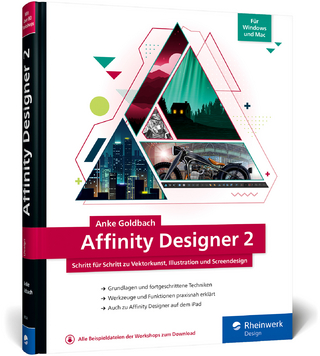
Geometry, Perspective Drawing, And Mechanisms
Seiten
2011
World Scientific Publishing Co Pte Ltd (Verlag)
978-981-4343-82-4 (ISBN)
World Scientific Publishing Co Pte Ltd (Verlag)
978-981-4343-82-4 (ISBN)
Examines the geometry of our world and, by blending theory with a variety of everyday examples, to stimulate the imagination of the readers and develop their geometric intuition. This book shows how a natural relaxation of the axioms developed in the early chapters leads to the concept of a matroid.
The aim of this book is to examine the geometry of our world and, by blending theory with a variety of every-day examples, to stimulate the imagination of the readers and develop their geometric intuition. It tries to recapture the excitement that surrounded geometry during the Renaissance as the development of perspective drawing gathered pace, or more recently as engineers sought to show that all the world was a machine. The same excitement is here still, as enquiring minds today puzzle over a random-dot stereogram or the interpretation of an image painstakingly transmitted from Jupiter.The book will give a solid foundation for a variety of undergraduate courses, to provide a basis for a geometric component of graduate teacher training, and to provide background for those who work in computer graphics and scene analysis. It begins with a self-contained development of the geometry of extended Euclidean space. This framework is then used to systematically clarify and develop the art of perspective drawing and its converse discipline of scene analysis and to analyze the behavior of bar-and-joint mechanisms and hinged-panel mechanisms. Spherical polyhedra are introduced and scene analysis is applied to drawings of these and associated objects. The book concludes by showing how a natural relaxation of the axioms developed in the early chapters leads to the concept of a matroid and briefly examines some of the attractive properties of these natural structures.
The aim of this book is to examine the geometry of our world and, by blending theory with a variety of every-day examples, to stimulate the imagination of the readers and develop their geometric intuition. It tries to recapture the excitement that surrounded geometry during the Renaissance as the development of perspective drawing gathered pace, or more recently as engineers sought to show that all the world was a machine. The same excitement is here still, as enquiring minds today puzzle over a random-dot stereogram or the interpretation of an image painstakingly transmitted from Jupiter.The book will give a solid foundation for a variety of undergraduate courses, to provide a basis for a geometric component of graduate teacher training, and to provide background for those who work in computer graphics and scene analysis. It begins with a self-contained development of the geometry of extended Euclidean space. This framework is then used to systematically clarify and develop the art of perspective drawing and its converse discipline of scene analysis and to analyze the behavior of bar-and-joint mechanisms and hinged-panel mechanisms. Spherical polyhedra are introduced and scene analysis is applied to drawings of these and associated objects. The book concludes by showing how a natural relaxation of the axioms developed in the early chapters leads to the concept of a matroid and briefly examines some of the attractive properties of these natural structures.
Combinatorial Figures; Combinatorial Geometries; Planar Geometries and Projective Planes; Non-Planar Geometries and Projective Spaces; Persective Drawings; Binocular Vision and Stereograms; Scene Analysis; Distortion and Anamorphic Art; Planar Bar-and-Joint Mechanisms; Non-Planar Hinged-Panel Mechanisms; Graphs; Spherical Polyhedra; Scene Analysis; Matroids.
| Verlagsort | Singapore |
|---|---|
| Sprache | englisch |
| Themenwelt | Kunst / Musik / Theater |
| Mathematik / Informatik ► Informatik ► Grafik / Design | |
| Mathematik / Informatik ► Mathematik ► Geometrie / Topologie | |
| Mathematik / Informatik ► Mathematik ► Graphentheorie | |
| ISBN-10 | 981-4343-82-X / 981434382X |
| ISBN-13 | 978-981-4343-82-4 / 9789814343824 |
| Zustand | Neuware |
| Haben Sie eine Frage zum Produkt? |
Mehr entdecken
aus dem Bereich
aus dem Bereich
Schritt für Schritt zu Vektorkunst, Illustration und Screendesign
Buch | Hardcover (2023)
Rheinwerk (Verlag)
39,90 €
Fit für Studium und Ausbildung
Buch | Softcover (2022)
Rheinwerk (Verlag)
24,90 €


